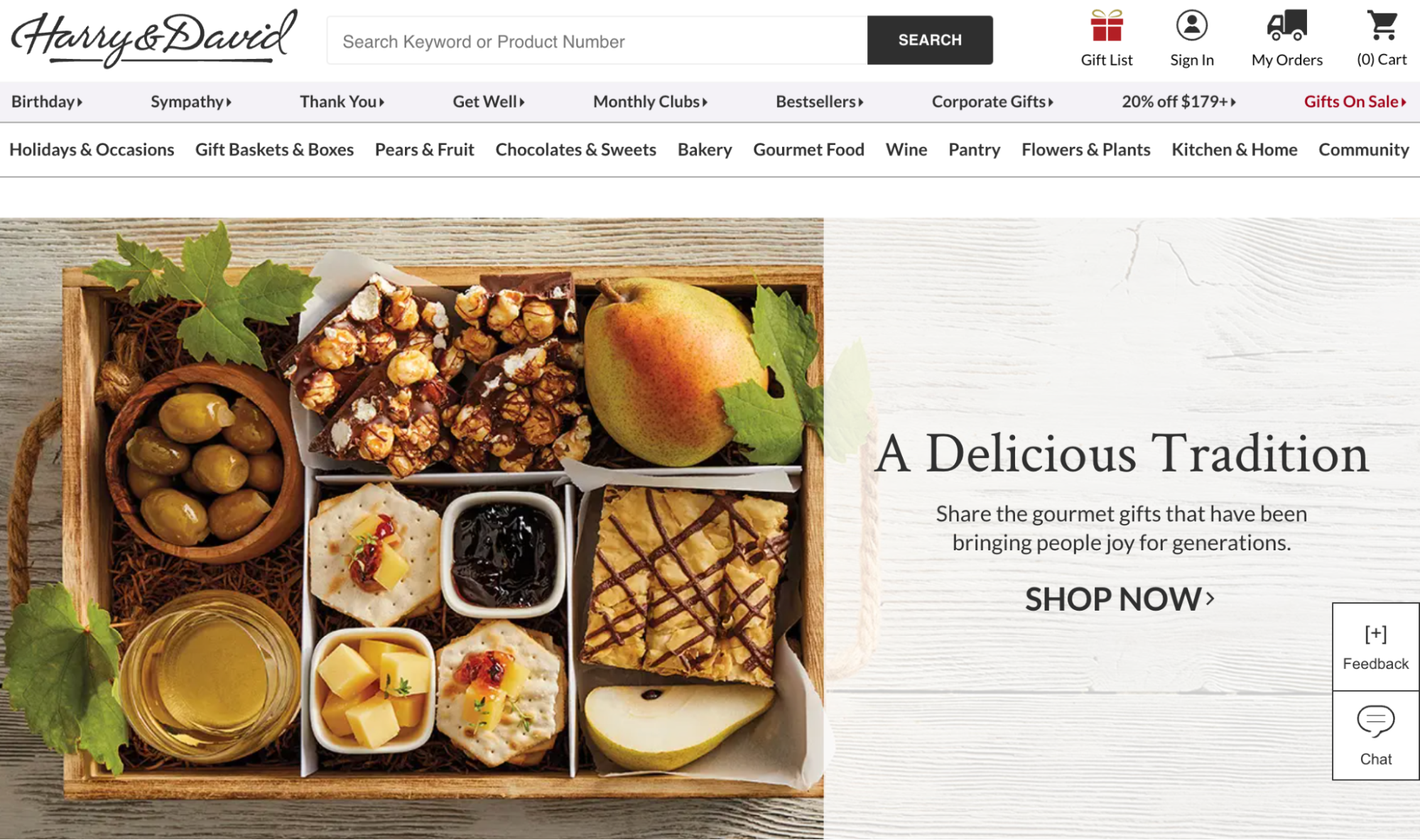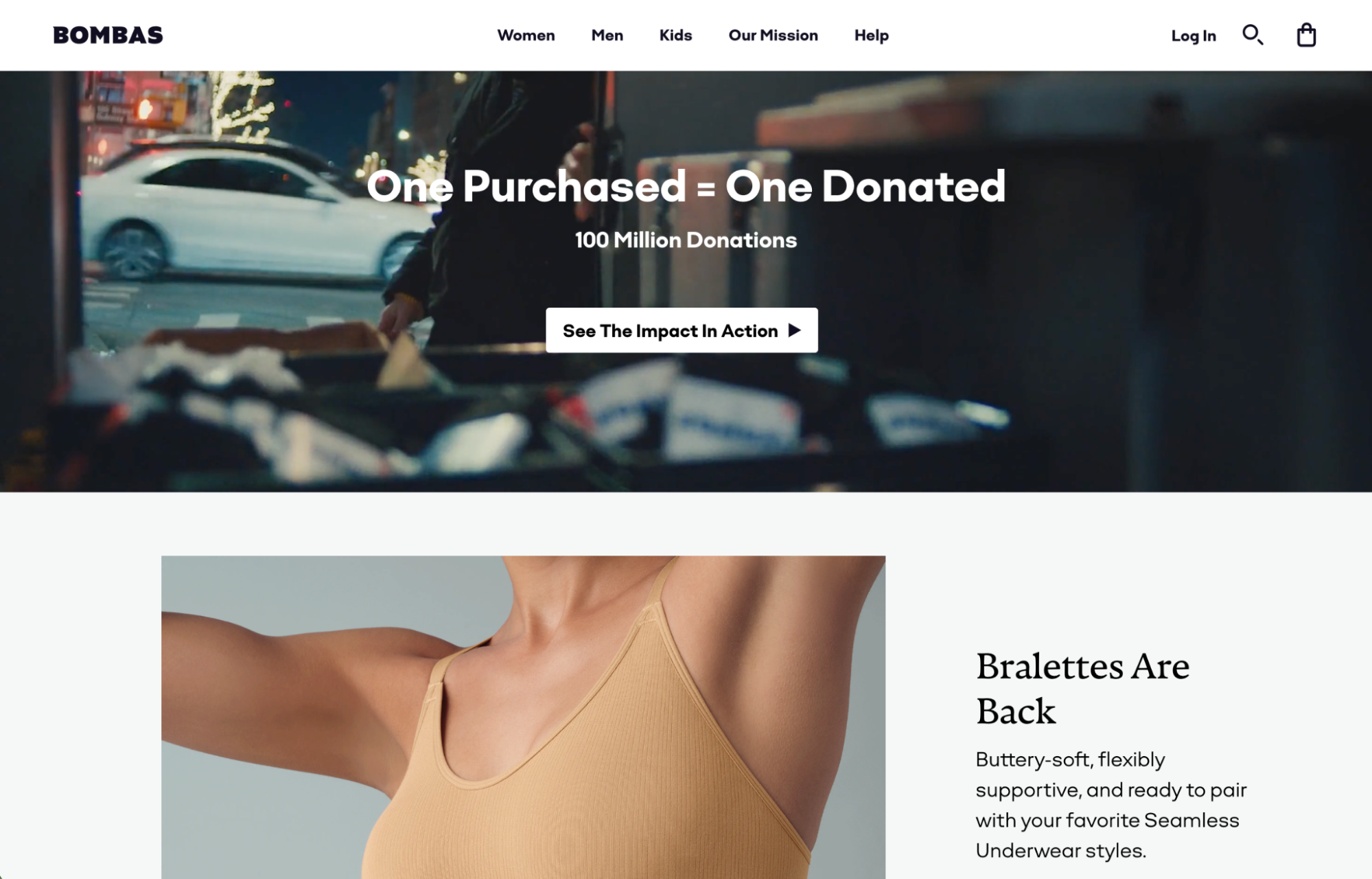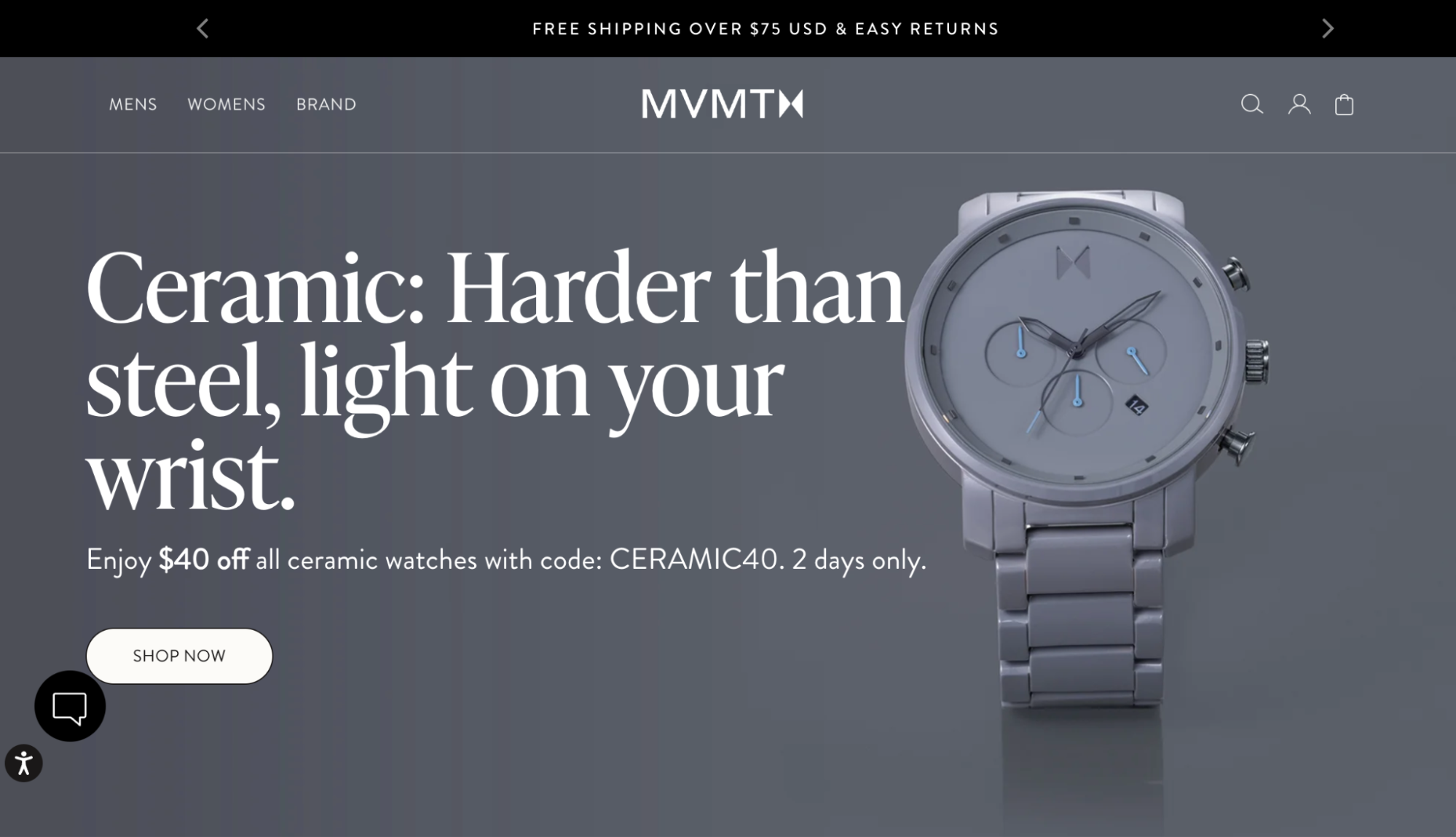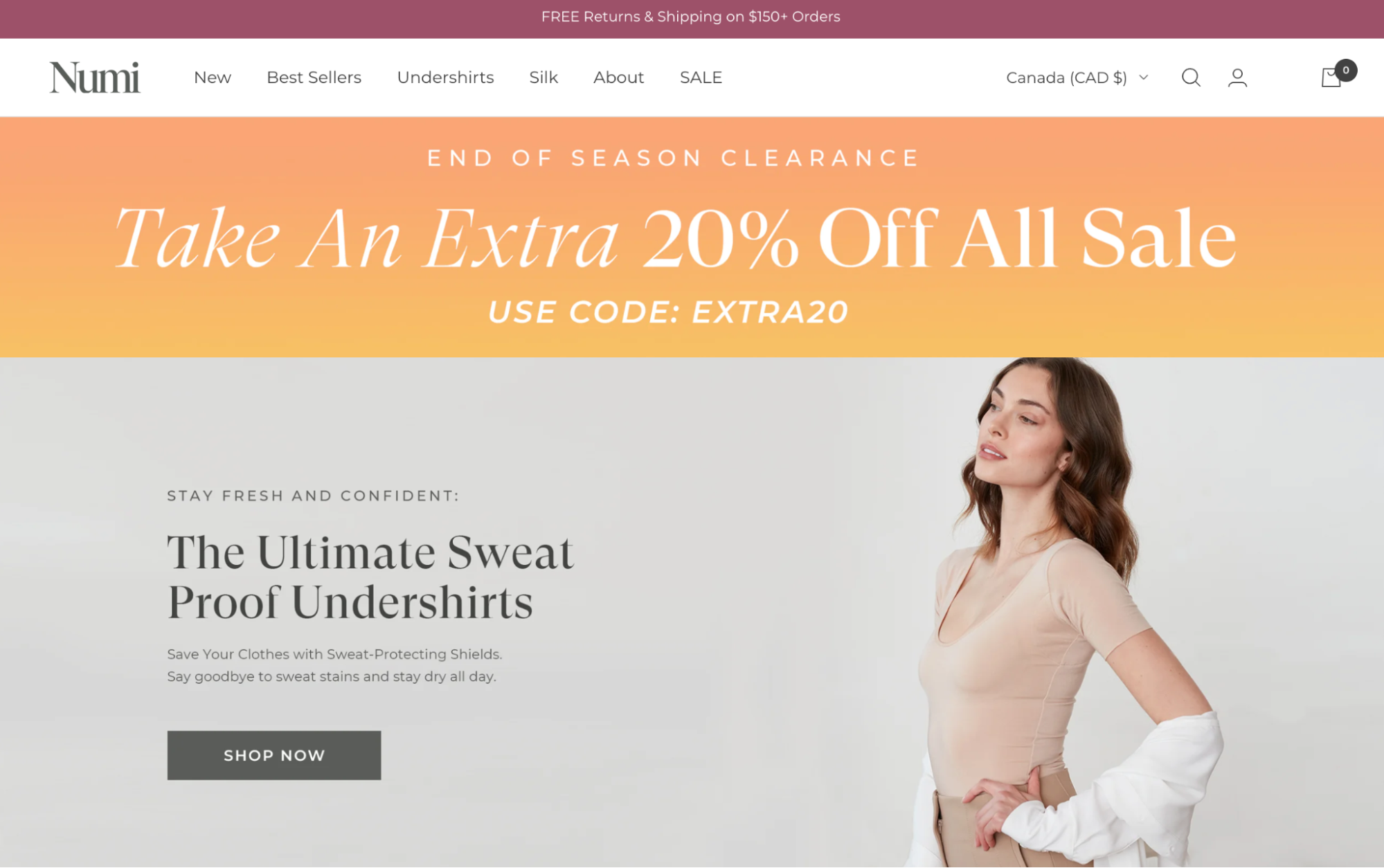Global spending on affiliate marketing is expected to hit $15.7 billion in 2024, with more than 80% of advertisers and 84% of publishers running affiliate programs. Considering this data, it’s safe to say retail affiliate programs are worth a closer look.
Retail affiliate programs have gained popularity over the past several years for a variety of reasons. For one, the average order value (AOV) for affiliate sales experienced a 27% year-over-year increase from April 2022 to 2023. And, an affiliate marketing program can drive revenue for brands as part of a wider digital marketing strategy.
Retail affiliate programs equip marketers and retailers of every size to reach a wider audience while winning new customers and boosting revenue. Here’s a look at how affiliate marketing programs work, how you can get started with an affiliate program, and some examples of successful programs.
What is a retail affiliate program?
A retail affiliate program is a program initiated by a retail brand to attract affiliates (or affiliate marketers) to promote its products using retail affiliate marketing.
Affiliate marketing refers to the promotion of other people's products in return for commission. For retailers, an affiliate marketing program taps into a network of affiliate partners who promote products to their audiences. Brands provide an affiliate link to these partners that consumers click to buy directly from the retailer. In return, retailers pay these affiliates a set commission for each sale that comes from their following.
The best affiliate programs work seamlessly with your business, and can be a way to add additional revenue.
Who are affiliate marketers?

Brands can expect to collaborate with various types of affiliate marketers within their affiliate program. Content creators, social media influencers, YouTubers, and other publishers can all become affiliates for a brand.
These are partners who share special coupon codes or referral links. In turn, affiliate marketers encourage their audience—social media followers, subscribers, and readers—to visit the companies’ online and retail stores.
How affiliate programs work
Affiliate programs work by connecting new audiences with products through affiliate marketers using an affiliate link. Affiliates promote and link to your products from their own website, blog, social media, or email. When customers click that link and ultimately make a purchase from your store, you pay out the commission (say, 5%) based on the total amount of that order.
Affiliate links
Orders from affiliates are tracked by creating a special affiliate link that allows you to see where visitors to your online store came from. Here’s an example of a what one looks like:
http://www.amazon.com/dp/ASIN/?tag=123456
In this example, the tag “123456” represents an individual affiliate’s ID number. You’ll assign a different number to each affiliate you partner with—creating a unique link allowing you to identify and keep track of the visitors they send your way, whether or not they become customers, and how much they spend.
This makes it easy to figure out which affiliates are sending the highest and most-valuable traffic so you can double down and pay them accordingly.
Should you pay per sale, per lead, or per click?
The majority of retail affiliate programs pay affiliates for each order that comes from their unique affiliate link, known as pay per sale. However, some retailers also opt to pay affiliates per lead, per click, or some combination of all three. The way you set up your affiliate program, including the percentage commission you offer, can fluctuate and evolve.
Deciding which method is best for your store depends on the primary goal of your affiliate marketing program. If you’re looking to increase brand awareness and recognition, pay per click could be the best option. If you’re strictly in it to boost revenue, the typical pay per sale is a better option.
Affiliate marketing for your retail store
The two main ways retailers implement a successful affiliate marketing program include building their own affiliate program and going directly to affiliates, and joining a third-party affiliate network to gain access to affiliates and streamline the back-end of the process.
Top affiliate networks for retail
There are myriad benefits and drawbacks to building your own program or using an affiliate network, but the key point to remember is that joining an affiliate network means you’ll have to pay an additional commission to the third party (on top of what you pay affiliates). If you’re a small retailer, this can eat into your profits in a hurry.
That said, joining an affiliate network makes it seamless to market your program and bring on affiliate partners. If that sounds right for you, a few of the top retail affiliate networks to consider include ShareASale, Rakuten Advertising (formerly Linkshare), and FlexOffers.
Building your own retail affiliate program
Building your own retail affiliate program is both easy to do and easy to automate. If you’re already using Shopify, you can access tons of plug-ins and modules that make it easy to track affiliate sales and pay out commissions.
If you’re not a Shopify merchant, there is other software you can choose from, like Erass and ReferralCandy.
The first step in building a program for your store is to identify the audience you want to reach:
- Who are your ideal customers?
- Where do they spend time online?
- Who do they listen to?
This information is vital because it informs which influencers, bloggers, or other personalities will be effective affiliates for your business.
The next step is to decide how you’ll set your commission structure. You can choose to pay per sale, per lead, per click, or any mix of the three. If you’re in doubt, paying per sale is always a safe bet.
Once that’s decided, consider what percentage you feel comfortable offering in exchange for each sale. Affiliate commissions are usually a small percentage (typically less than 10%) and can vary from one type of product to another. It’s also common to offer higher commissions to affiliates who send more orders your way.
Target, for example, offers up to 8% commission on home and outdoor living products and a flat 1% on health and beauty.
When you have a list of potential affiliates and you know what you’re willing to pay for a commission, the next step is to reach out and recruit those affiliates for your store. Once you’ve brought them on, you can automate affiliate order tracking and payment using the Shopify plug-ins or another software option.
Why you should be picky about your store’s affiliate partners
It’s easy to fall into the thinking that any affiliate sale is a win. However, the best affiliate marketers take it a step further and exercise extreme prejudice when selecting partners.
After all, a one-off sale isn’t as valuable as a repeat customer—but if they come from an affiliate, you’ll pay the same for both.
That’s why it’s good practice to be picky about the affiliates you work with and pay. Use a tool like HubSpot CRM or Salesforce that allows you to track the entire lifecycle of new customers brought in through affiliate marketing. This makes it easy to make informed decisions about where to spend and double down on your affiliate marketing efforts in order to get the best returns in the long term.
5 examples of retail affiliate marketing programs
- Harry & David lets data inform spend
- Bombas backs commissions with a cause
- MVMT protects the bottom line with time-limited commissions
- Blendtec offers an affiliate marketing program with attractive rates
- Numi attracts the right partners
Successful businesses use retail affiliate programs to grow their businesses. Learn from three brands that use affiliate marketing to drive traffic and sales for their ecommerce and retail stores.
1. Harry & David lets data inform spend

Harry & David specializes in premium food gifts and gift baskets. The company lets data speak for itself and lead its investment in an affiliate program, whether working with individual partners, affiliate networks, or large coupon websites. It considers more than just affiliate performance, tracking affiliates’ search and traffic trends outside their contribution to Harry & David.
Digital marketing manager Christian Schwindle told Digital Commerce 360 that the company’s analytical approach to affiliate investment led to the best returns—skyrocketing revenue from one particular affiliate “from five digits to seven digits.”
2. Bombas backs commissions with a cause
Bombas is a sock and apparel brand with a mission-backed focus linked to its retail affiliate program. When items are bought through its affiliate links or site banners, Bombas affiliates earn commissions on net sales—while also contributing to the brand’s buy one, donate one approach.

3. MVMT protects the bottom line with time-limited commissions

MVMT, a popular direct-to-consumer watch brand, built a large band of affiliates by offering above-market commissions of 8%. But to ensure it paid only for immediate sales (instead of brand awareness or just leads), it put a time limit on commissions: the affiliate program only paid when customers bought from a link within 15 days.
4. Blendtec offers an affiliate marketing program with attractive rates

Popular blender company Blendtec similarly offers an above market rate of 8% commission to any affiliate marketer who can drive a sale for its online business. The brand also has a 45-day cookie duration, meaning the affiliate partner can earn affiliate income for 45 days post-click.
5. Numi attracts the right partners

Numi partners with Shareasale to run its affiliate marketing program, paying up to 18% commission on affiliate partner-driven purchases. It attracts the right affiliates to promote products by calling them Style Partners and specifically gearing the program to style bloggers and influencers.
Grow your business with retail affiliate programs
When done right, retail affiliate programs can be a huge boon for your business. They can facilitate higher sales, grow brand recognition, and even promote trust in your business—that’s why so many of today’s businesses lean on affiliate marketing as part of their overall marketing strategy.
Your brand needs a retail affiliate program to tap into the revenue and reach of this online marketing strategy. By building an affiliate program that’s best for your business—and letting data lead your decisions and investments—you can boost revenue in a sustainable way.
Read more
- Back-to-School Marketing: A Quickstart Guide for Businesses in the Industry
- Cause Marketing: What It Is, How To Do It, and Why It Matters
- 24 Retail Blogs Every Small Business Entrepreneur Should Be Reading
- How to Run a Successful Sales Promotion (with Proven Ideas and Examples)
- What Retailers Need to Know About Voice Shopping
- How to Set Up and Optimize Your Google Business Profile
- A/B Testing: How Retailers Can Optimize Their Sales With Experimentation
- The Ultimate Guide to Geotargeting in Retail
Retail affiliate programs FAQ
What is the highest paying affiliate program?
The highest paying affiliate program will depend on the type of product or service you are promoting. Generally, the higher the commission rate, the higher the earning potential. Some of the highest paying affiliate programs include Amazon Associates, eBay Partner Network, and Commission Junction.
What brands have an affiliate program?
Some of the brands that have a retail affiliate program include Amazon, Walmart, Best Buy, Target, Macy’s, eBay, Kohl’s, Apple, Home Depot, Lowe’s, JD Sports, and Nike. These retail affiliate programs by large retailers are good reference points for brands looking to implement their own affiliate program.
How do I become a store affiliate?
To become a store affiliate, you will need to apply for an affiliate program through the store or company you would like to promote. Most stores and companies have an online application process for retail affiliate programs, where you will provide information about your website or blog, as well as how you plan to promote their products or services. Once your application is approved, you will be given an affiliate link that you can use to track traffic and sales.
What are the 3 main types of affiliates?
The three main types of affiliate marketers are:
1. PPC affiliates: These affiliate marketers use pay-per-click (PPC) campaigns to drive traffic to their partner sites.
2. Content affiliates: These affiliate marketers create content related to the products or services being offered and promote them through blogs, websites, videos, and other digital channels.
3. Referral affiliates: These affiliate marketers use referrals to drive traffic to their partner sites. They can use email campaigns, social media posts, or even physical cards to refer customers to their partner’s website.
What are the top affiliate networks for retailers?
An affiliate network is a thirdparty company that connects brands with affiliates. The best affiliate network for your brand is the one that offers the right terms and partners for your goals. Brands often use top affiliate networks rather than creating their own affiliate programs due to the convenience and access to brands. Some of these networks include ShareASale, Rakuten Advertising (formerly Linkshare), and FlexOffers.





